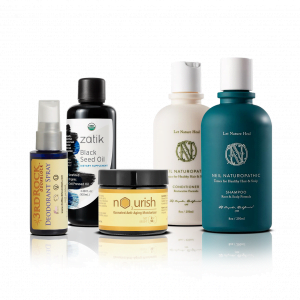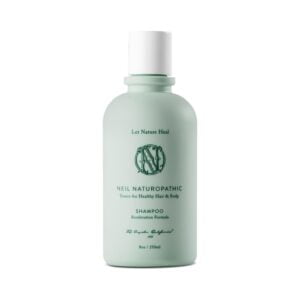Sharing is caring!
By Justine McGrath, HoneyColony Original
To many of us, aloe vera is the sticky green stuff our mothers would help apply after a particularly sunny day at the beach. I can remember being eight years old, skin reddening and freckling with each passing minute, and getting lectured by my unhappy parents on the importance of skincare whilst getting covered in the slimy remedy. It turns out Aloe vera is good for a lot more than just sunburn relief. It has benefits that extend to our bowels, our blood, and maybe even our blood sugar. Aloe vera usage dates back thousands of years, and still intrigues society to this day.
Believed to have been used by forward thinkers of medicine in great societies such as ancient Egypt, Persia, Rome, and Greece, Aloe vera plants were harvested for their natural benefits as beauty treatments, laxatives, and food additives. It is widely accepted that the succulent was originally, most extensively, grown in Africa. It has since circulated to a variety of different countries, including the U.S., where it is most commonly farmed in Texas, Arizona, California, and Florida. According to Garden Guides, succulents like Aloe vera are able to survive the heat “by storing massive amounts of water as quickly as they can when it rains. Their root systems are shallow and spread wide so that when it rains, the water can be absorbed from the soil’s surface before it evaporates.” The moisture is then stored in the plant’s leaves, which allows the plant to continue to thrive even in the warmest of climates, long after the rain has passed.
It is occasionally grown in other states, but since warm temperatures aren’t as readily available, Aloe is often cultivated in green houses to mimic warmer climates. The plant is accredited for defying deathly temperatures (up to 104 degrees Farenheit and higher). Such heat will cause little to no damage as long as the root is maintained. The plant will not withstand frost. Aloe is a green plant, rigid in texture, full of moisture. The juices inside the coveted plant life make it desirable for a variety of uses; the ancient Egyptians claim that Nefertiti and Cleopatra used the plant’s juice as a topical beauty treatment to keep their skin looking youthful. Present-day women and men purchase Aloe in the form of face washes, moisturizers, and anti-aging creams to reduce fine lines and signs of aging.
Although there are over 360 species of Aloe plants, Aloe barbadensis (often called aloe vera) is the particular species many cultures have used over thousands of years to better their health. It is also the species most commonly used for medicinal and cosmetic remedies.
Our bodies require 20 essential amino acids but we can’t produce them independently. Typically, we absorb amino acids through food combinations of wheat, legumes, dairy, and meat. Aloe vera, however, contains all of the amino acids our bodies need to help build protein. This protein development assists in cellular regeneration and is accredited with repairing brain function. This fuel for cellular regrowth is the main reason that Aloe vera is viewed as such a powerful healing element.
Aloe contains enzymes that create an anti-inflammatory effect, soothing irritated bowels and the mucous lining of the digestive tract. For this reason, it is commonly used as a laxative. According to Herb Wisdom, aloe vera juice “is said to soothe digestive tract irritations such as colitis, ulcers and irritable bowel syndrome. Its ability to encourage the release of pepsin (a gastric juice enzyme necessary for digestion) when the stomach is full is a possible reason for its ulcer-healing effects. ”In addition to its wealth of amino acids and enzymes, Aloe barbadensis also contains calcium, chromium, copper, iron, magnesium, manganese, potassium, sodium, and zinc, along with vitamins A, C, and E that aid in fighting free radicals.
Perhaps even more impressively, the wonder plant is currently being studied to determine its effect on people living with diabetes. A study led by Kwanghee Kim which was published in the International Journal of Phytotherapy and Phytopharmacology in September 2009 showed that processed aloe vera gel (PAG) administered to overweight mice appeared to lower blood glucose levels, suggesting that PAG may help treat non-insulin-dependent diabetes cases.
This all-around detoxification substance can be thrown into smoothies or applied externally to sooth insect bites, relieve blisters or Herpes outbreaks, moisturize skin, fight eczema, alleviate ulcers and, when used with toothpaste, strengthen teeth. Aloe vera is truly a natural miracle worker. You can purchase it in topical solutions, wellness pills, or liquid form. One innovative way to use the succulent is on hot summer days. Place a small tube in your refrigerator or freezer, and apply all over your skin after a long day in the sun. The cool aloe will soothe and calm your skin, and make you feel like a million bucks!
Our Neil Naturpathic hair products also incude aloe vera. Wither over 20 minerals, a rich supply of vitamins like A, B12, C, and E, over 75 active compounds that promote a healthy body, the aloe vera in the haircare products also rebalances your scalps pH levels to get rid of dirt, dandruff, and other muck.
 Justine McGrath is an optimistic Californian on the hunt for the perfect cup of coffee and the world’s most comfortable running shoes. A UCSD graduate with a soft-spot for “so-ugly-they’re-cute” animals, you may find her on local San Diego beaches or trying to concoct the perfect burrito combination.
Justine McGrath is an optimistic Californian on the hunt for the perfect cup of coffee and the world’s most comfortable running shoes. A UCSD graduate with a soft-spot for “so-ugly-they’re-cute” animals, you may find her on local San Diego beaches or trying to concoct the perfect burrito combination.
-
Sale Product on sale
 Total BodyCare Health Bundle
Total BodyCare Health Bundle$144.94$134.95 — available on subscription from$144.94$130.00 / month -
 Neil Naturopathic: Restorative Conditioner$32.50 — or subscribe and save 10%
Neil Naturopathic: Restorative Conditioner$32.50 — or subscribe and save 10% -
 Neil Naturopathic: Acceleration Formula Shampoo$32.50 — or subscribe and save 5%
Neil Naturopathic: Acceleration Formula Shampoo$32.50 — or subscribe and save 5%
- Tags: aloe, aloe vera, blood, blood sugar, garden, natural, natural remedy, remedy, sugar, sunburn





1 thought on “Aloe Vera: The Wonder Plant”
I’ve used aloe topically and love it. After reading about its nutrient density, I’ll also be buying some to go in my smoothie!
Comments are closed.